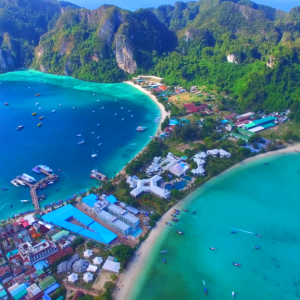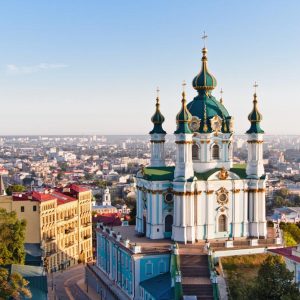Contents
- 1
- 1.Renuion
- 2.Gansbaai, South Africa
- 3.Chowpatty Beach, India
- 4.Shenzhen, China
- 5.The Red Triangle, California
- 6Bikini Atoll, US Marshall Islands
- 7.Kilauea, Hawaii
- 8.Volusia County, Florida
- 9.Copacabana Beach
- 10.Playa Zipolite, Mexico
- 11.Staithes, UK
- 12.Fraser Island, Australia
- 13Praia de Boa Viegem, Brazil
- 14.Northern Territory and Queensland, Australia
- 15..Amazon Beaches
1
While most people believe that dangers in a beach come only in the form of sharks and other monstrous sea creatures, there are other reasons too for deeming a beach dangerous. For instance, a blue shark’s presence created a huge furore in Magaluf recently.
Visitors were seen dashing for the nearest shore when in reality there have been only 4 unprovoked blue shark fatalities since the 16th century. The ocean can be as sinister and dangerous as it can be beautiful and pristine. Here is a list of some of the world’s most dangerous beaches.
1.Renuion
Reunion is a French territory nestled around 140 miles from the beach country Mauritius smack in the middle of the Indian Ocean. This 40 mile stretch of an island has witnessed about 16 percent of the world’s shark attacks, including that of body boarder Alexandre Naussac.
If the entire world had the same rate of shark attack as Reunion, several million people will be wiped out from the planet quickly. Truly dangerous! Click On the Next Button to See Next.
2.Gansbaai, South Africa
 100vw, 696px” data-lazy-src=”https://acovalue.info/wp-content/uploads/2023/10/2-10-696×522-1.jpg” /><img decoding=)
This is one of the world’s deadly white shark capitals. Located a few miles from the coast, Shark Alley is a tiny water channel juxtaposed between the famous Geyser Rock and Dyer Island. It is a hotbed of fur seals, which brings the great white sharks here in large numbers.
Little wonder then that you’ll spot tons of visitors flashing their cameras in secure, shark-proof cages. Ensure that you don’t tease or provoke the creatures from the comfortable confines of your cage.
3.Chowpatty Beach, India
 100vw, 696px” data-lazy-src=”https://acovalue.info/wp-content/uploads/2023/10/12-6-696×464-1.jpg” /><img decoding=)
Chowpatty Beach is known to be one of the planet’s most polluted beaches, and its shore is not kind to swimmers. It has acquired an infamous reputation for being highly polluted, crowded and non swim friendly. Avoid visiting the beach from late August to September, when Mumbai’s denizens descend upon the beach in huge numbers to celebrate Ganesh Chaturthi, a well-known Hindu festival.
During the festival (especially during idol immersion), Chowpatty is packed with boisterous revelers who participate in frenzied singing and dancing sessions, while biding adieu to the elephant god.
4.Shenzhen, China
 100vw, 696px” data-lazy-src=”https://acovalue.info/wp-content/uploads/2023/10/3-10-696×392-1.jpg” /><img decoding=)
Nestled just across China’s border with Hong Kong, the Shenzhen Beach is terribly crowded. And that’s not all! It also serves as a huge rmeinder (though people don’t take heed) of the fact that drowing has led to the highest number of fatalities in the 1-14 years age group in China. Yes drowing is a huge scare in the Republic of China, and as such swimming in not advisble on most beaches. Truly heart wrenching!
5.The Red Triangle, California
 100vw, 696px” data-lazy-src=”https://acovalue.info/wp-content/uploads/2023/10/6-9-696×420-1.jpg” /><img decoding=)
The strip from Big Sur to Bodega Bay in the northern part of the state is where 11 percent of all recorded white shark attacks on people occur according to statics by the ISAF. A heavy concentration of sea mammals such as otters and seals are pretty much the reason sharks thrive in large numbers here. Avoid venturing too close to the coast and always be on guard against the big whites!
6Bikini Atoll, US Marshall Islands
 100vw, 696px” data-lazy-src=”https://acovalue.info/wp-content/uploads/2023/10/13-6-696×392-1.jpg” /><img decoding=)
This UNESCO World Heritage Site is hazardous for more than a single reason. Other than nuclear radiations, visitors also have to contend with dangerous sharks. Bikini Atoll has been the site of over 20 nuclear weapons tested between 1946 and 1958. Though these islands were deemed safe by US boffins during the late 90’s, the original residents do not want to return here.
Avoid eating locally grown stuff, and absolutely no chomping on coconuts fallen on the road. There has been no fishing activity here since the past 65 years, which means sea creatures (including sharks) are thriving in the Marshall Islands waters. This along with innumerable shipwrecks in the region draws numerous divers every year.
7.Kilauea, Hawaii
 100vw, 696px” data-lazy-src=”https://acovalue.info/wp-content/uploads/2023/10/14-7-696×392-1.jpg” /><img decoding=)
Kilauea’s black sand beach on Hawaii’s largest island lies next to the planet’s most active volcano, which has been consistently erupting from the early 80’s. The volcano spews dangerous lava into the sea. The island state has also witnessed over 100 shark attacks (unprovoked), eight of which proved to be fatal in 1928.
8.Volusia County, Florida
 100vw, 696px” data-lazy-src=”https://acovalue.info/wp-content/uploads/2023/10/4-10-696×452-1.jpg” /><img decoding=)
According to shark attack statsics mainatined by the International Shark Attack File, the Volusia County has witnessed more shark attacks than the entire South Africa. To be precise, the number sits as 290 since 1882. In another unrelated yet equally intriguing trivia, your chances of being struck by lighting are higher in Florida than any other place in North America. Scary? You bet!
9.Copacabana Beach
 100vw, 696px” data-lazy-src=”https://acovalue.info/wp-content/uploads/2023/10/5-9-696×464-1.jpg” /><img decoding=)
Humans are scarier than skarks at this popular Brail hotspot. Instances of petty crime are high here. Since one gets to hear about thefts and robberies very often on the beach, it is sensible to leave your stuff in the safe at your hotel or resort.
The most amusing part is, instances of petty crimes reduced drastically during the 2016 Olympics. Howeve,r it is still too early to conclude if the coastal hotspot has got its act together and decided to be permemntly nice to tourists! Yes, Copacabana has earned a reputation for being quite a party hotspot post sundown.
However, you’ve got to watch out for crime and use commonsense by not venturing into isolated alleys and parts of the beach when it gets dark.
10.Playa Zipolite, Mexico
 100vw, 660px” data-lazy-src=”https://acovalue.info/wp-content/uploads/2023/10/7-9-1.jpg” /><img decoding=)
Local legend has it that Zipolite in Nahuatl language translates to “beach of the dead.” This tiny patch of white sand is attracts everyone from backpackers to enthusiastic nudists seeking their time under the sun. The fearfully named Playa Zipolite features dangerous waves and currents. A 1995 established local lifeguard has led to a reduction in the number of drowning. It is one of the country’s last remaining nude beaches, while still being high on the 70’s hippie culture. Despite its dangerous currents, Playa Zipolite remains a popular choice with international backpackers, who choose to live in one of its earthy, rustic cabins or camping places lining the beach.
11.Staithes, UK
 100vw, 550px” data-lazy-src=”https://acovalue.info/wp-content/uploads/2023/10/8-10.jpg” /><img decoding=)
The activist group Surfers Against Sewage termed Yorkshire’s Staithes Beach as one of the continent’s most polluted and worst beach ever due to its high pollution and low cleanliness factor. The beach consistently failed to meet hygiene and environment standards set by the European Union. Others close on the heels of Staithes include Margate’s Walpole Bay, Cornwall’s Silloth and Somerset’s Burnham-on-sea. Why is bathing in polluted waters dangerous, you ask? Hepatitis A, diarrhea, meningitis and several other illnesses!
12.Fraser Island, Australia
 100vw, 696px” data-lazy-src=”https://acovalue.info/wp-content/uploads/2023/10/9-10-696×463-1.jpg” /><img decoding=)
The beaches around Fraser in Queensland’s southeastern belt ate a huge no-no. Of course, it isn’t dangerous if you love swimming with sinister sharks in waters that feature powerful rip currents. Head towards the inland, and you’ll bump into the planet’s deadliest creatures such venomous spiders, saltwater crocodile and dingoes (known to attack people at times). Fraser Island is also a camping and lush ecotourism hotspot.
13Praia de Boa Viegem, Brazil
 100vw, 696px” data-lazy-src=”https://acovalue.info/wp-content/uploads/2023/10/10-9-696×522-1.jpg” /><img decoding=)
The much sought after Praia de Boa Viegem in Recife draws sunbathers all around the year. It was once a safe and shark-free beach. However from 1992, there was been about 50 reported shark attacks, out of which 19 turned out to be fatal. Environment experts are of the opinion that area’s ecology is being damaged by the region’s coastal system owing to fishing trawls that lurk uncomfortably closer to the coastline. As if that wasn’t all you had to watch out for, the Brazilian city is also dealing with instances of violent crimes.
14.Northern Territory and Queensland, Australia
 100vw, 696px” data-lazy-src=”https://acovalue.info/wp-content/uploads/2023/10/11-9-696×522-1.jpg” /><img decoding=)
Every year from October to April, huge swarms of jellyfish lead to the temporary shutting down of several beaches throughout Australia. They are the planet’s most poisonous creatures, known to be the cause of around 70 deaths since late 19th century. Stings are known to be exceedingly painful, and some of its unfortunate victims suffer cardiac arrest even before reaching the shore.
15..Amazon Beaches
 100vw, 696px” data-lazy-src=”https://acovalue.info/wp-content/uploads/2023/10/15-6-696×464-1.jpg” /><img decoding=)
Paddling in Amazonian beaches translates into sharing the sea with deadly creatures such as anacondas (yes, they exist beyond movies), eels and piranhas. Stay safely put on the shore if you are planning to go anywhere near these beaches. Over the Amazon beach horizon, you will spot large wetlands, tabletop mountains, gigantic waterfalls and rivers larger than the biggest you’ve ever seen in other continents. The savannas surrounding Amazon’s rivers and beaches are a breeding ground for some of the world’s deadliest spices.



